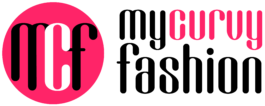Coloring has long been recognized as an enjoyable artistic activity for children. It offers a creative outlet, a means of learning, and personal expression.
Coloring can play a surprisingly educational role when teaching children about the diverse world of fashion and style. “Coloring with Purpose: Tips to Teach Valuable Lessons about Fashion Through Coloring” explores how parents and educators can utilize coloring activities to introduce children to fashion concepts, history, and design principles, turning a simple pastime into a learning experience.
1. Choosing the Right Coloring Pages
The journey begins with selecting coloring pages that reflect various fashion styles, historical periods, and cultural attire. Look for pages that feature clothing designs from different eras, traditional costumes worldwide, and contemporary fashion trends. This variety broadens children’s understanding of fashion and fosters appreciation for cultural diversity and historical evolution.
2. Incorporating Fashion History
Integrate lessons on fashion history into coloring activities by providing brief descriptions or stories alongside the coloring pages. For instance, when coloring a chameleon style, discuss the societal norms and technological advancements that influenced fashion trends. This approach helps children understand the context behind the styles they are coloring.
3. Discussing Color Theory and Design Principles

Use coloring activities to teach basic color theory and design principles. Encourage children to experiment with color combinations and discuss how different colors and patterns can convey various moods and styles. This enhances their coloring experience and lays the groundwork for a deeper understanding of fashion design.
4. Encouraging Personal Expression

Fashion is a form of self-expression, and coloring can be a way for children to explore their style preferences and creative ideas. Encourage them to modify the clothing on coloring pages according to their imagination — changing patterns, adding accessories, or even designing outfits from scratch on blank templates.
5. Guiding Conversations Around Completed Projects
Once a coloring project is completed, take the time to discuss it. Ask children about their choices, what they learned about the fashion style they colored, and how they might wear or adapt that style in real life. This dialogue reinforces learning and encourages children to see fashion as a dynamic and personal art form.
6. Organizing Themed Coloring Sessions
To deepen engagement, organize themed coloring sessions focusing on specific aspects of fashion, such as wedding attire from different cultures, iconic fashion pieces, or sustainable fashion.
These themes can spark interest and enrich discussions about fashion’s impact on society and the environment.
“Coloring with Purpose: Tips to Teach Valuable Lessons about Fashion Through Coloring” highlights how a creative activity like coloring can become an educational journey into the fashion world.
By carefully selecting coloring pages, incorporating lessons on fashion history, and fostering discussions on style and design, parents and educators can enrich children’s understanding of fashion, encouraging creativity, cultural awareness, and personal expression.
As children color their way through the diverse tapestry of fashion, they develop artistic skills and gain insights into one of humanity’s most expressive art forms.
Additional:
- Plus Size Famous Freaknik Outfits Ideas
- Plus Size Sneaker Ball Dress Outfit Ideas
- Check Out These Trending Plus Size Ruched Dress
- Check Out These Trending Plus Size Winter Dresses For Women

